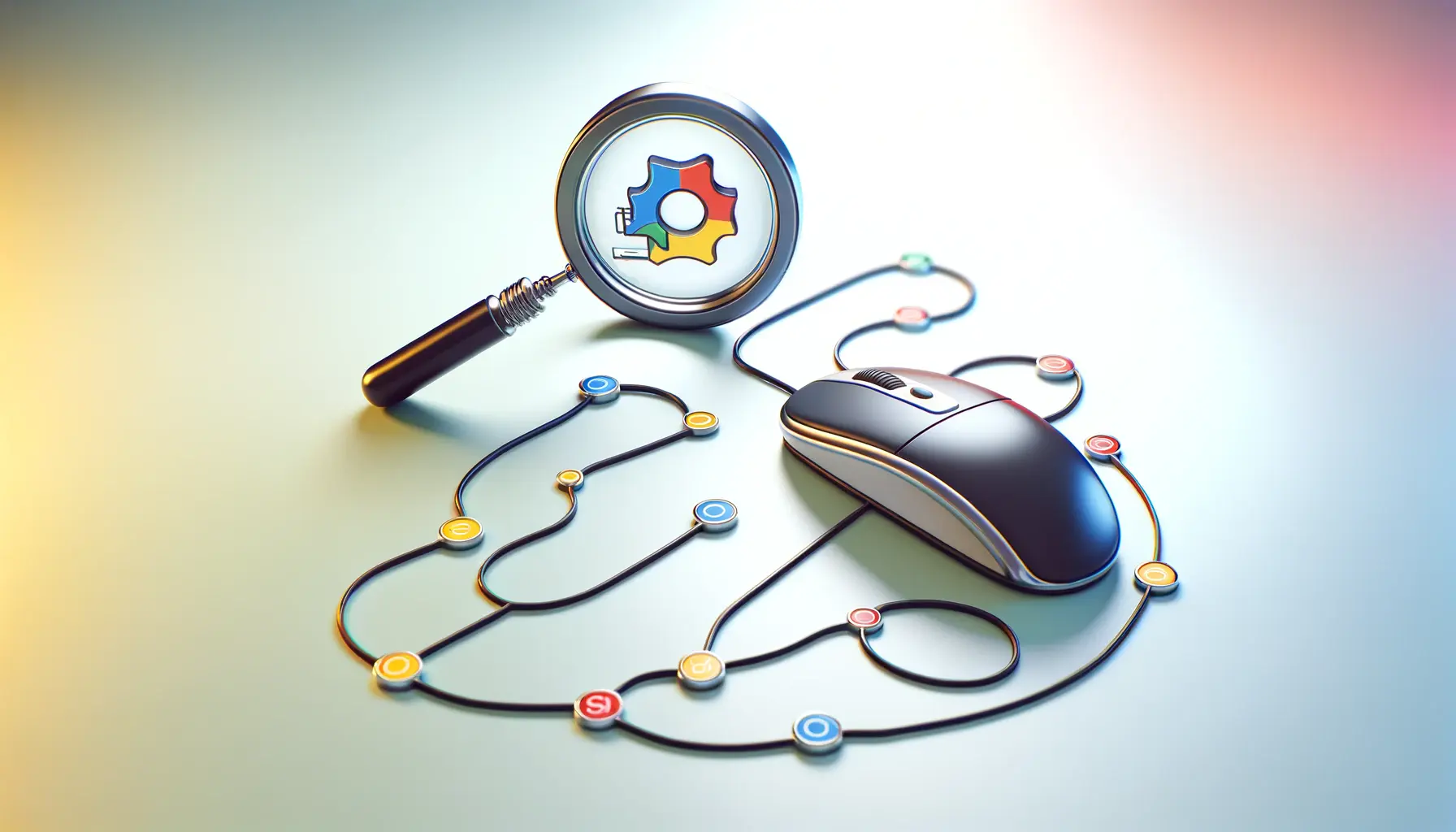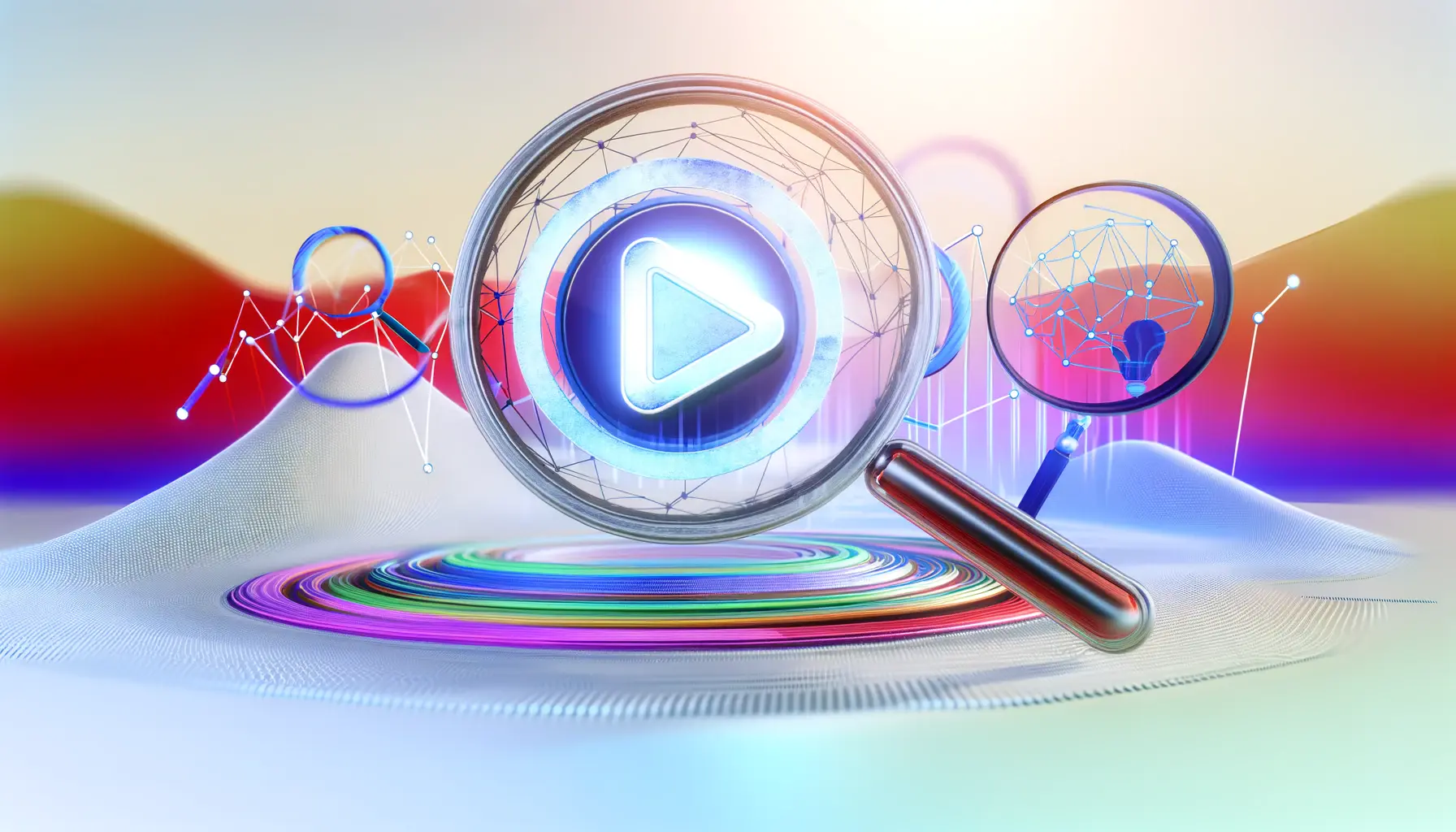The digital landscape is evolving, and with it, the strategies for optimizing search engine optimization (SEO) are becoming more innovative.
Among the plethora of tools and techniques available to digital marketers and SEO specialists, one of the most intriguing developments is the integration of DALL-E generated images into SEO strategies.
This approach not only breathes new life into content but also leverages the power of visual elements to enhance online visibility and engagement.
At the heart of this strategy lies DALL-E, an AI program developed by OpenAI, capable of generating diverse and complex images from textual descriptions.
The implications of such technology for SEO are profound, offering a unique blend of creativity and optimization that can significantly impact a website’s search engine rankings.
By harnessing the capabilities of DALL-E, businesses and content creators can produce highly relevant, unique, and engaging images tailored to their content, thereby improving their SEO performance.
- Understanding the Impact of Visuals on SEO
- Strategies for Integrating DALL-E Images into SEO
- Optimizing DALL-E Images for Technical SEO
- Enhancing Content Discoverability with DALL-E Images
- Measuring the Impact of DALL-E Images on SEO Performance
- Future Trends: AI in Visual SEO
- Best Practices for Implementing DALL-E Images in SEO
- Maximizing SEO with DALL-E Generated Images: A Forward-Looking Approach
- FAQs on Optimizing SEO with DALL-E Generated Images
Understanding the Impact of Visuals on SEO
Visual content has always been a critical component of digital marketing and SEO strategies.
Images can make content more engaging, reduce bounce rates, and improve user experience—all factors that search engines like Google consider when ranking websites.
However, the advent of AI-generated images through tools like DALL-E takes this a step further by offering the ability to create bespoke visuals that are directly aligned with the content’s theme and keywords.
Integrating DALL-E generated images into SEO strategies is not just about adding visual appeal; it’s about enhancing the content’s relevance and context.
These images can be optimized with appropriate alt texts, captions, and titles, incorporating targeted keywords to boost SEO efforts.
Moreover, unique and high-quality images can increase the likelihood of backlinks and shares, further amplifying the content’s reach and its SEO performance.
Benefits of DALL-E Generated Images for SEO
The utilization of DALL-E generated images offers several benefits for SEO, including the creation of unique and captivating visuals that can capture the audience’s attention.
Unlike stock photos, which are often overused across multiple websites, DALL-E’s AI-generated images provide a level of uniqueness and customization that can set a website apart in the crowded digital space.
Moreover, these images can be tailored to reflect specific keywords or concepts, making them highly relevant to the content they accompany.
This relevance is crucial for SEO, as it can help search engines better understand and index the content, potentially leading to higher rankings in search results.
Additionally, engaging visuals are more likely to be shared across social media and other platforms, increasing the content’s visibility and backlink potential.
Incorporating DALL-E generated images into your SEO strategy can significantly enhance your content’s appeal and search engine performance by providing unique, relevant, and engaging visuals.
Strategies for Integrating DALL-E Images into SEO
Integrating DALL-E generated images into an SEO strategy requires thoughtful planning and execution.
The goal is to ensure that these images not only enhance the visual appeal of the content but also contribute to its overall SEO performance.
Here are some effective strategies to achieve this:
Keyword Optimization in Image Descriptions
One of the first steps in leveraging DALL-E images for SEO is to optimize them with relevant keywords.
This involves carefully selecting keywords that are not only relevant to the content but also have a high search volume.
These keywords should then be incorporated into the image file names, alt attributes, and captions, helping search engines understand the context of the images and how they relate to the content.
Moreover, keyword optimization helps in making the images discoverable in image search results, thereby driving additional traffic to the website.
It’s important to strike a balance, however, to avoid keyword stuffing, which can negatively impact SEO.
Creating Visually Engaging Content
Visually engaging content is more likely to retain visitors, reduce bounce rates, and encourage interactions, all of which are positive signals to search engines.
DALL-E’s ability to generate unique and captivating images allows for the creation of visually rich content that can engage readers and encourage them to spend more time on the site.
Here are some tips for creating visually engaging content with DALL-E images:
- Align Images with Content Themes: Ensure that the images generated by DALL-E are closely aligned with the themes and topics of your content. This coherence between text and visuals enhances the user experience and reinforces the content’s message.
- Use High-Quality Images: Prioritize the generation of high-resolution images that are clear and visually appealing. High-quality images can significantly improve the perceived value of your content and make it more shareable.
- Incorporate Variety: Utilize DALL-E’s versatility to create a variety of images, including illustrations, infographics, and photo-realistic visuals. A diverse range of images can make the content more interesting and engaging for readers.
Improving User Engagement and Experience
User engagement and experience are critical components of SEO, and DALL-E generated images can play a significant role in enhancing both.
By creating images that are not only relevant but also interactive and thought-provoking, you can improve user engagement metrics such as time on page and page views.
Additionally, well-designed images can improve the overall aesthetic of the website, making it more appealing and user-friendly.
Consider using DALL-E images to break up large blocks of text, illustrate complex ideas, or highlight key points.
Interactive elements, such as clickable images or image galleries, can also add an extra layer of engagement, encouraging users to interact more with the content.
Leveraging DALL-E generated images is a powerful way to enhance both the visual appeal and SEO performance of your content. By following these strategies, you can create a more engaging, visually rich, and optimized online presence.
Optimizing DALL-E Images for Technical SEO
While the creative and strategic integration of DALL-E generated images can significantly enhance content engagement and relevance, optimizing these images for technical SEO is equally important.
Technical optimization ensures that images contribute positively to the site’s overall SEO health, without compromising loading times or user experience.
Here are key considerations for optimizing DALL-E images technically:
Image Compression and Format Selection
Large image files can slow down page loading times, negatively affecting both user experience and search engine rankings.
To mitigate this, it’s crucial to compress DALL-E generated images without significantly losing quality.
Tools like TinyPNG or ImageOptim can reduce file sizes by removing unnecessary data.
Additionally, choosing the right image format plays a role in optimization.
Formats like JPEG are suitable for photographs, while PNGs are better for images with transparency, and WebP offers a good balance between quality and compression.
Implementing responsive images through HTML’s element or srcset attributes ensures that the appropriate image size is loaded depending on the user’s device, further improving loading times and user experience.
Lazy Loading Implementation
Lazy loading is a technique that delays the loading of images until they are about to enter the viewport.
This means that users don’t have to wait for images to load when they first land on a page, which can significantly improve page loading times.
Implementing lazy loading for DALL-E generated images can be done through HTML attributes or JavaScript libraries, enhancing site speed and performance.
Structured Data and Image Sitemaps
Structured data markup helps search engines understand the content and context of your images, making them more likely to appear in rich results.
Using schema.org’s ImageObject markup, you can provide detailed information about your images, such as their creator, license, and more.
Additionally, including DALL-E generated images in an XML sitemap specifically for images can further improve their discoverability by search engines.
- Utilize Alt Text Effectively: Alt text not only improves accessibility but also provides search engines with context about the image. Ensure that alt text for DALL-E images is descriptive and includes relevant keywords.
- Optimize Image Titles and Captions: Similar to alt text, image titles and captions offer additional opportunities to incorporate keywords and improve the image’s SEO.
- Monitor Image Performance: Use tools like Google’s PageSpeed Insights to monitor the impact of images on site speed and make adjustments as necessary.
Technical optimization of DALL-E generated images is a critical step in ensuring they positively impact your site’s SEO. By focusing on compression, format selection, lazy loading, and structured data, you can enhance both the performance and discoverability of your images.
Enhancing Content Discoverability with DALL-E Images
Content discoverability is a cornerstone of effective SEO, ensuring that your valuable content reaches its intended audience.
DALL-E generated images, when optimized and utilized strategically, can significantly boost the discoverability of your content across various platforms.
This part of the article delves into how leveraging these AI-generated visuals can enhance your content’s visibility and attract more organic traffic.
Image SEO Best Practices
Adhering to image SEO best practices is essential for enhancing content discoverability.
This includes optimizing image file names by incorporating relevant keywords that reflect the image content, which helps search engines understand and index the images more effectively.
Additionally, optimizing alt attributes provides a text alternative for search engines and improves accessibility for users with visual impairments.
These practices not only make your content more accessible to a wider audience but also contribute to its overall SEO performance.
Furthermore, leveraging the unique and engaging nature of DALL-E generated images can make your content stand out in image search results, increasing the likelihood of clicks and visits to your site.
By creating images that are directly related to the search queries of your target audience, you can improve the visibility of your content and attract more targeted traffic.
Social Media Engagement and Shares
Social media platforms are powerful channels for increasing content discoverability.
DALL-E generated images, with their novelty and customization, can capture the attention of social media users, encouraging them to engage with and share your content.
High-quality, relevant images are more likely to be shared, extending the reach of your content beyond your immediate followers.
This not only drives direct traffic to your site but also contributes to your content’s social signals, a factor that search engines may consider in their ranking algorithms.
- Customize Images for Different Platforms: Tailor DALL-E generated images to fit the optimal size and format requirements of different social media platforms to maximize engagement.
- Encourage User Interaction: Use DALL-E images to create interactive content, such as polls or quizzes, that prompts users to engage directly with your posts.
- Track Performance: Monitor the performance of your DALL-E images on social media to understand what resonates with your audience and refine your strategy accordingly.
Link Building Opportunities
Unique and compelling DALL-E generated images can also open up new link building opportunities.
By offering high-quality, relevant images for free use in exchange for attribution, you can encourage other websites to link back to your site.
This not only increases your site’s backlink profile but also enhances its authority and trustworthiness in the eyes of search engines.
Collaborating with influencers or industry leaders to feature your DALL-E images in their content can further amplify this effect.
Leveraging DALL-E generated images is a multifaceted strategy that can significantly enhance the discoverability of your content. By following SEO best practices, engaging social media audiences, and exploring link building opportunities, you can maximize the visibility and impact of your content in the digital landscape.
Measuring the Impact of DALL-E Images on SEO Performance
To truly understand the value that DALL-E generated images bring to your SEO strategy, it’s crucial to measure their impact accurately.
This involves tracking various metrics and analyzing data to gauge how these images influence your website’s search engine rankings, traffic, and user engagement.
By systematically evaluating the performance of DALL-E images, you can make informed decisions to optimize your content and visual strategy further.
Key Metrics to Track
Several key metrics can help you measure the impact of DALL-E generated images on your SEO performance.
These include:
- Page Views and Unique Visits: Monitor any changes in page views and unique visits to pages with DALL-E images to assess their effect on attracting traffic.
- Bounce Rate: Analyze the bounce rate of pages featuring DALL-E images. A lower bounce rate can indicate that the images are making the content more engaging and retaining visitors.
- Time on Page: Evaluate the average time visitors spend on pages with DALL-E images compared to those without. Increased time on page suggests that the images are enhancing user engagement.
- Image Search Rankings: Track the rankings of your DALL-E images in image search results. Higher rankings can lead to increased visibility and traffic.
- Social Shares and Engagement: Measure the social shares and engagement levels of content with DALL-E images to understand their impact on social media performance.
Utilizing tools like Google Analytics, Google Search Console, and social media analytics platforms can provide valuable insights into these metrics, allowing you to quantify the impact of DALL-E images on your SEO efforts.
Adjusting Your Strategy Based on Data
Armed with data on the performance of DALL-E generated images, you can make strategic adjustments to optimize their impact.
For instance, if certain types of images are performing exceptionally well in terms of engagement and time on page, consider creating more content featuring similar visuals.
Conversely, if some images do not seem to resonate with your audience or contribute to SEO goals, it may be time to experiment with different styles or themes.
Additionally, analyzing the keywords and topics associated with high-performing images can provide insights into what your target audience is interested in.
This information can guide your future content creation efforts, ensuring that both your textual and visual content aligns with audience preferences and search trends.
Data-driven analysis is essential for maximizing the SEO benefits of DALL-E generated images. By closely monitoring key performance metrics and being willing to adjust your strategy based on insights gained, you can enhance the effectiveness of your visual content and achieve better SEO outcomes.
Future Trends: AI in Visual SEO
The integration of AI-generated images, particularly those created by DALL-E, into SEO strategies marks a significant shift in how visual content is produced and optimized for search engines.
As technology evolves, we’re likely to see new trends and advancements in the use of AI for visual SEO.
Understanding these potential future directions can help marketers and SEO professionals stay ahead of the curve, ensuring their strategies remain effective and innovative.
Advancements in AI Image Generation
As AI technology continues to advance, we can expect DALL-E and similar tools to become even more sophisticated.
Future iterations may offer improved accuracy in generating images that closely match specific prompts, enhanced customization options, and even the ability to produce images that are indistinguishable from photographs taken by humans.
These advancements will provide content creators with unprecedented flexibility and creativity in producing visuals that are both engaging and SEO-friendly.
Moreover, AI could enable the automatic generation of images based on content, removing the need for manual input and making the process of visual content creation more efficient.
This could revolutionize the way images are used in SEO, making it easier to produce unique, relevant visuals at scale.
Increased Personalization and User Engagement
Future trends in AI-generated imagery for SEO are likely to emphasize personalization and user engagement.
AI could be used to create images tailored to individual user preferences or browsing history, enhancing the user experience and potentially improving engagement metrics.
Personalized images could also be dynamically generated in real-time, providing each visitor with a unique visual experience that encourages longer site visits and deeper engagement.
This level of personalization will not only benefit SEO through improved user engagement metrics but also help brands build stronger connections with their audience by delivering more relevant and appealing content.
Integration with Other AI Technologies
The convergence of AI-generated images with other AI technologies, such as natural language processing (NLP) and machine learning, is another exciting future trend.
This integration could lead to the development of comprehensive AI-driven SEO tools that can optimize both textual and visual content simultaneously, offering a holistic approach to SEO that maximizes both visibility and user engagement.
For example, AI could analyze a piece of content to determine its main themes and concepts and then automatically generate or suggest images that complement and enhance the text.
This would streamline the content creation process, ensuring that all elements of a webpage are fully optimized for both search engines and users.
The future of AI in visual SEO is bright, with advancements in AI image generation, increased personalization, and integration with other AI technologies set to transform how visual content is created and optimized. By staying informed about these trends, SEO professionals and marketers can leverage the full potential of AI to enhance their SEO strategies and deliver compelling, engaging content.
Best Practices for Implementing DALL-E Images in SEO
As the digital marketing landscape continues to evolve with advancements in AI technology, implementing DALL-E generated images within SEO strategies has become a game-changer for many businesses.
To maximize the effectiveness of these AI-generated visuals, it’s essential to adhere to best practices that ensure they not only enhance the aesthetic appeal of your content but also contribute positively to your SEO efforts.
Here are some key best practices to consider:
Align Images with Content Strategy
Ensuring that DALL-E generated images are in harmony with your overall content strategy is crucial.
This alignment enhances the relevance and coherence of your content, making it more valuable to your audience and more likely to be favored by search engines.
- Relevance: Create images that accurately reflect the theme and message of your content. This increases the likelihood of engaging your target audience and improving your content’s performance in search results.
- Consistency: Maintain a consistent visual style across all DALL-E generated images to strengthen your brand identity and make your content instantly recognizable.
Optimize for Accessibility and User Experience
Accessibility and user experience are pivotal in SEO and should be considered when integrating DALL-E images into your content.
Optimizing images for these factors not only helps in ranking better but also ensures that your content is inclusive and accessible to all users.
- Alt Text: Use descriptive alt text for each image, incorporating relevant keywords without over-optimizing. This improves accessibility for visually impaired users and helps search engines understand the context of your images.
- Loading Times: Compress images to reduce file sizes without compromising quality, ensuring faster loading times and a better user experience.
Leverage Images for Engagement and Conversion
DALL-E generated images should not only serve as decorative elements but also as tools to drive engagement and conversion.
Strategically placed images can guide users through your content, highlight key information, and encourage specific actions.
- Call-to-Action: Use images to draw attention to calls-to-action (CTAs), making them more noticeable and increasing the likelihood of user interaction.
- Information Highlighting: Employ images to break up text and highlight important data or statistics, making the content more digestible and engaging for readers.
Monitor and Analyze Performance
Regularly monitoring and analyzing the performance of your DALL-E generated images is essential to understand their impact on your SEO and content strategy.
Use analytics tools to track metrics such as page views, bounce rates, and conversion rates related to pages with these images.
- Adjustments: Based on performance data, make necessary adjustments to your image strategy. This could involve changing the types of images used, optimizing file sizes further, or altering how images are integrated into the content.
- A/B Testing: Conduct A/B tests with different images to determine which types resonate most with your audience and lead to better engagement and conversion rates.
Implementing DALL-E generated images within your SEO strategy offers a unique opportunity to enhance your content’s visual appeal and effectiveness. By following these best practices, you can ensure that your AI-generated visuals not only captivate your audience but also contribute to your site’s SEO performance.
Maximizing SEO with DALL-E Generated Images: A Forward-Looking Approach
In the rapidly evolving digital landscape, the integration of DALL-E generated images into SEO strategies represents a significant leap forward.
This innovative approach not only enhances the visual appeal of online content but also plays a pivotal role in improving search engine optimization efforts.
By leveraging the capabilities of AI to produce unique, relevant, and engaging visuals, businesses and content creators can achieve a competitive edge in the crowded digital marketplace.
The Synergy Between AI-Generated Images and SEO
The fusion of DALL-E’s AI-generated images with SEO practices offers a multifaceted approach to digital marketing.
These visuals, when optimized correctly, can significantly boost a website’s visibility, user engagement, and ultimately, its ranking on search engine results pages (SERPs).
The key to harnessing the full potential of DALL-E images lies in their strategic integration into content, adherence to technical SEO standards, and alignment with user experience and accessibility guidelines.
Strategic Implementation for Optimal Results
For those looking to optimize their SEO with DALL-E generated images, a strategic implementation plan is essential.
This includes:
- Creating images that are directly tied to the content’s theme and keywords.
- Ensuring images are optimized for web performance, including compression and proper formatting.
- Utilizing alt text and captions to improve accessibility and provide context to search engines.
- Incorporating images in a way that enhances user engagement and complements the textual content.
Moreover, the continuous monitoring and analysis of these images’ performance on your site will provide valuable insights, allowing for data-driven adjustments to your visual content strategy.
Looking Ahead: The Future of AI in SEO
As we look to the future, the role of AI in SEO, particularly through tools like DALL-E, is set to expand.
We can anticipate more sophisticated image generation capabilities, deeper integration with other AI technologies for comprehensive SEO optimization, and increased personalization to meet user preferences.
Staying abreast of these advancements and incorporating DALL-E generated images into SEO strategies will be crucial for those aiming to stay competitive in the digital domain.
In conclusion, optimizing SEO with DALL-E generated images offers a promising avenue for enhancing online content and improving search engine rankings.
By embracing this innovative approach, leveraging the best practices outlined, and preparing for future trends, businesses and content creators can unlock new opportunities for growth and success in the digital landscape.
FAQs on Optimizing SEO with DALL-E Generated Images
Explore common questions about enhancing your SEO strategy using DALL-E generated images.
DALL-E generated images are visuals created by an AI, based on textual descriptions, offering unique content for SEO optimization.
They provide unique, relevant visuals that enhance user engagement, potentially improving search rankings and visibility.
Yes, but optimizing image size and format can mitigate any negative effects on page loading times.
While unique, it’s crucial to consider the originality and use of DALL-E images to avoid copyright issues.
Incorporate relevant keywords in alt text and file names, and ensure images are compressed for web use.
Yes, especially when they’re well-optimized with SEO best practices, including proper alt attributes and file names.
Use descriptive prompts related to your content’s keywords and optimize the resulting images for the web.
Absolutely. Alt text improves accessibility and provides search engines with context, enhancing SEO.











